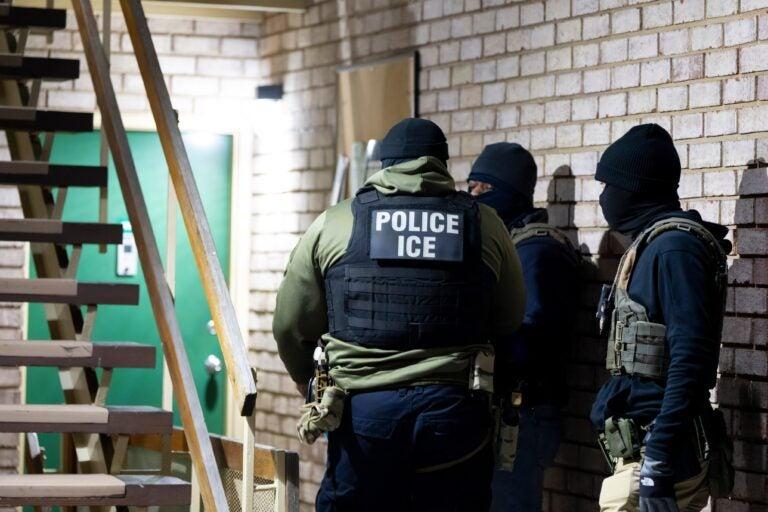As immigration enforcement activities increasingly intersect with community spaces, schools across the United States are bracing for the possibility of U.S. Immigration and Customs Enforcement (ICE) agents appearing on their campuses. Recognizing the deep concerns and potential disruptions these encounters may cause, educators and parents are collaborating to develop protocols and resources aimed at protecting students and maintaining a supportive learning environment. This article explores how schools are preparing teachers and families to navigate these challenging situations, highlighting the growing efforts to ensure students’ safety and rights in an uncertain climate.
Preparing Educators for Unexpected ICE Visits in School Settings
School districts across the country are stepping up efforts to equip educators with the tools and knowledge necessary to respond effectively if Immigration and Customs Enforcement (ICE) agents arrive on campus unexpectedly. These initiatives include training sessions designed to clarify teachers‚Äô rights and legal boundaries, emphasizing the need to protect students’ privacy and ensure their safety without obstructing law enforcement inappropriately. Educators learn how to calmly communicate with ICE officials, reassuring students while avoiding unnecessary disclosures that could jeopardize families.
Parents are also being engaged through outreach programs that outline steps to take during an ICE visit, including creating emergency contact plans and understanding their legal rights. Practical advice covers topics such as:
- Knowing what documents ICE agents can legally request
- Recognizing when agents must have a warrant
- Developing school-wide protocols to minimize disruption and fear
These measures reflect a growing urgency to maintain educational environments where all children feel secure, irrespective of immigration status.
| Preparation Element | Key Actions |
|---|---|
| Teacher Training | Legal guidance, communication strategies, emergency response |
| Parent Outreach | Rights education, resource distribution, emergency contacts |
| Policy Development | Visitor notification, documentation handling, mental health support |
Understanding Legal Rights and Protocols for Teachers and Staff
Teachers and school staff often find themselves on the frontlines when ICE agents arrive at schools. Understanding legal rights and established protocols is crucial to ensure that staff act consistently with both school policies and individuals’ constitutional protections. Staff members are generally advised not to allow immigration enforcement officials into classrooms or offices without a valid warrant or explicit consent. Furthermore, educators should be aware of the legal distinctions between requests for information versus requests to access a student or family member, which can carry different obligations and risks.
Schools typically provide clear guidelines outlining how to respond in these situations, emphasizing the importance of safeguarding student privacy and maintaining a calm environment. Key steps include:
- Requesting to see a warrant or court order before allowing ICE agents to enter school premises.
- Avoiding disclosure of immigration status or personal information without legal compulsion.
- Informing designated school authorities or legal counsel immediately upon any interaction with law enforcement.
| Scenario | Recommended Action |
|---|---|
| ICE Agent requests access without warrant | Politely deny entry; request warrant |
| Agent asks for student information | Refer to school legal counsel |
| Student or parent detained on premises | Follow school crisis protocols |
Guidance for Parents on Protecting Their Children’s Wellbeing
Parents are encouraged to maintain open communication with their children about their rights and what to expect if immigration agents appear at their school or home. Experts emphasize the importance of empowering children with knowledge while providing reassurance to reduce anxiety. Practical steps include:
- Stay calm and composed: Children pick up on parental emotions, so demonstrating calmness can help alleviate fear.
- Discuss emergency contacts: Ensure children know how to reach trusted adults if separated during an event.
- Review school protocols together: Understanding how the school will respond can help children feel safer.
In addition, parents are advised to collaborate with educators and school counselors to develop a unified response strategy. Schools are increasingly offering workshops and materials to help families navigate these difficult situations. To further support parental preparedness, the following quick-reference table outlines key contact points and resources:
| Resource | Contact Info | Purpose |
|---|---|---|
| School Counselor | (555) 123-4567 | Emotional support for students and families |
| Legal Aid Hotline | 1-800-555-HELP | Legal advice on immigration matters |
| Local Advocacy Group | advocacygroup@example.com | Community support and information |
Building Community Resources and Support Networks to Navigate Immigration Enforcement
Across the nation, educators and community leaders are banding together to create robust systems that empower families facing the threat of immigration enforcement. These initiatives prioritize collaboration between schools, legal aid organizations, and local immigrant advocacy groups, forming a safety net that ensures access to critical information and assistance. Workshops tailored for teachers and parents focus on understanding constitutional rights, recognizing ICE protocols, and establishing clear communication channels to reduce panic during unexpected visits. Key strategies include:
- Developing multilingual resource materials to bridge language barriers
- Designating trusted school personnel as points of contact for families
- Creating emergency response plans customized for each school community
- Facilitating regular training sessions addressing legal updates and best practices
These networks operate as dynamic ecosystems aimed at strengthening trust and resilience in vulnerable communities. By integrating social workers, counselors, and immigration experts within school environments, they not only respond to enforcement-related crises but also cultivate ongoing emotional support and advocacy. The collaborative model has proven effective in maintaining stability for children’s education and well-being, reducing classroom disruptions, and fostering a safer atmosphere where families feel informed and protected.
Future Outlook
As immigration enforcement actions continue to reverberate through communities nationwide, schools are increasingly becoming frontlines in a complex and often contentious issue. By equipping teachers and parents with knowledge and resources, educators aim to safeguard students and maintain trust within the school environment. While challenges remain, these preparations reflect a broader effort to balance compliance with federal law and the need to protect vulnerable children and families. The evolving role of schools in responding to ICE presence underscores the intersection of education, immigration policy, and community resilience in an era of heightened scrutiny.




